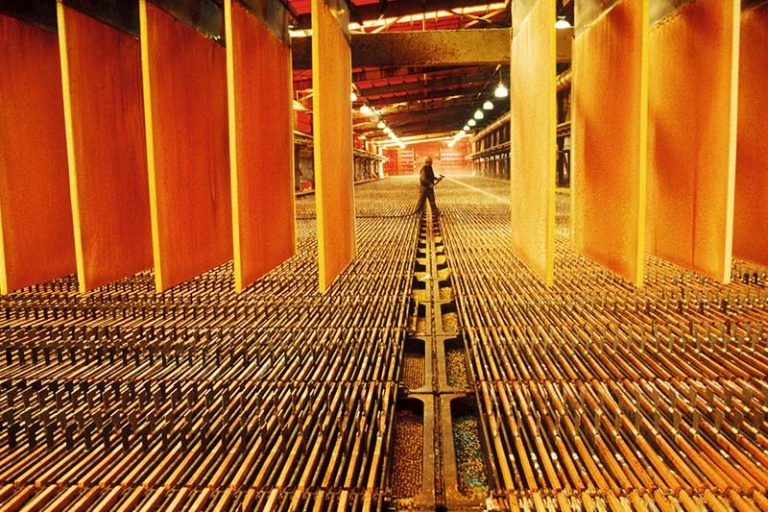Electrowinning is a process that allows to have copper with a high degree of purity.

Next October, the Chamber of Mines of Peru will organize the «GeoMet International Mining Congress 2016«, with several courses on specialized topics and optimization. In this way, the institution seeks to contribute to reduction of effects caused by the crisis period that the extractive sector has been going through for more than a year; where one of the most influential factors is the cost decrease of metals in the international market, which has reduced the level of profits for mining companies.
As part of the program of this important event, the «Short Courses» are included; these consist of a series of specialized presentations aimed to the different aspects involved in the mining process.
The Director of Metallurgy Projects of the Chamber of Mines of Peru, Ph.D. Jose Luis Salazar Navarrete, will be in charge of the course «Optimization of Copper and Polymetallic Ore Processing Plants» for mining professionals.
Regarding the subject, he stated that «one of the ways to optimize performance of copper and polymetallic ore processing plants is by choosing the most appropriate methods for recovery of these materials. One of the most effective and simple methods is electrowinning, since it allows recovering copper metals with a high degree of purity, in the most economical way and minimizing the environmental impact».
One of the main advantages of electrowinning is that the red metal produced with this technique has a high degree of purity (99%). This process is less polluting because there are three flows that move in a closed circuit, which implies less interaction with the environment and absence of gases. The last benefit to mention is that production costs are cheaper compared to other techniques.
In this ore plant optimization course, mining professionals will also learn more about the advantages of electrowinning. For example, the red metal produced with this technique has a high purity degree (99%). In addition, the process is less polluting because there are three flows that move in a closed circuit, which implies less interaction with the environment and the absence of gases. Production costs are also cheaper compared to other techniques.
Technological progress is important in this aspect to improve the results in the various procedures used. In the case of electrowinning or electrowinning, robotics is used to handle the electrodes.
Another recently employed technology is the use of circular or cylindrical cathodes instead of conventional flat ones. This change leads to improvements in the control and speed of diffusion, which is the speed at which atoms are transported within the liquid solution. In addition, this technique allows copper concentrations of up to five grams per liter to be used, in contrast to the traditional electrowinning process, which requires solutions of 35 to 45 grams per liter to generate cathodes.
Another of the processes carried out in these plants is leaching. Currently, advances to increase efficiency consist of technologies for the instrumentation and monitoring of heap irrigation quality.
«This includes systems for heap irrigation homogeneity control via instrumentation, mechanisms for temperature monitoring and wireless devices,» says Francisco Arraigada, metallurgical specialist at Arcadis.
As regards solvent extraction, the innovations in recent years have been the development of circuits with better performance, studies to avoid degradation and loss of organic material and the use of activated clays. The latter provide proven advantages such as recomposing the organic compound for reuse.
Another viable alternative to improve the obtaining of ore products such as copper and other polymetallics is the application of simulation models. At first, the application of these methods can be useful in all stages of the development of a mining project.
One of the main applications of these tools is optimization; that is, providing the necessary data at minimum cost and without risk. By making use of these models, professionals seek to control production processes, design new treatments and optimize them.